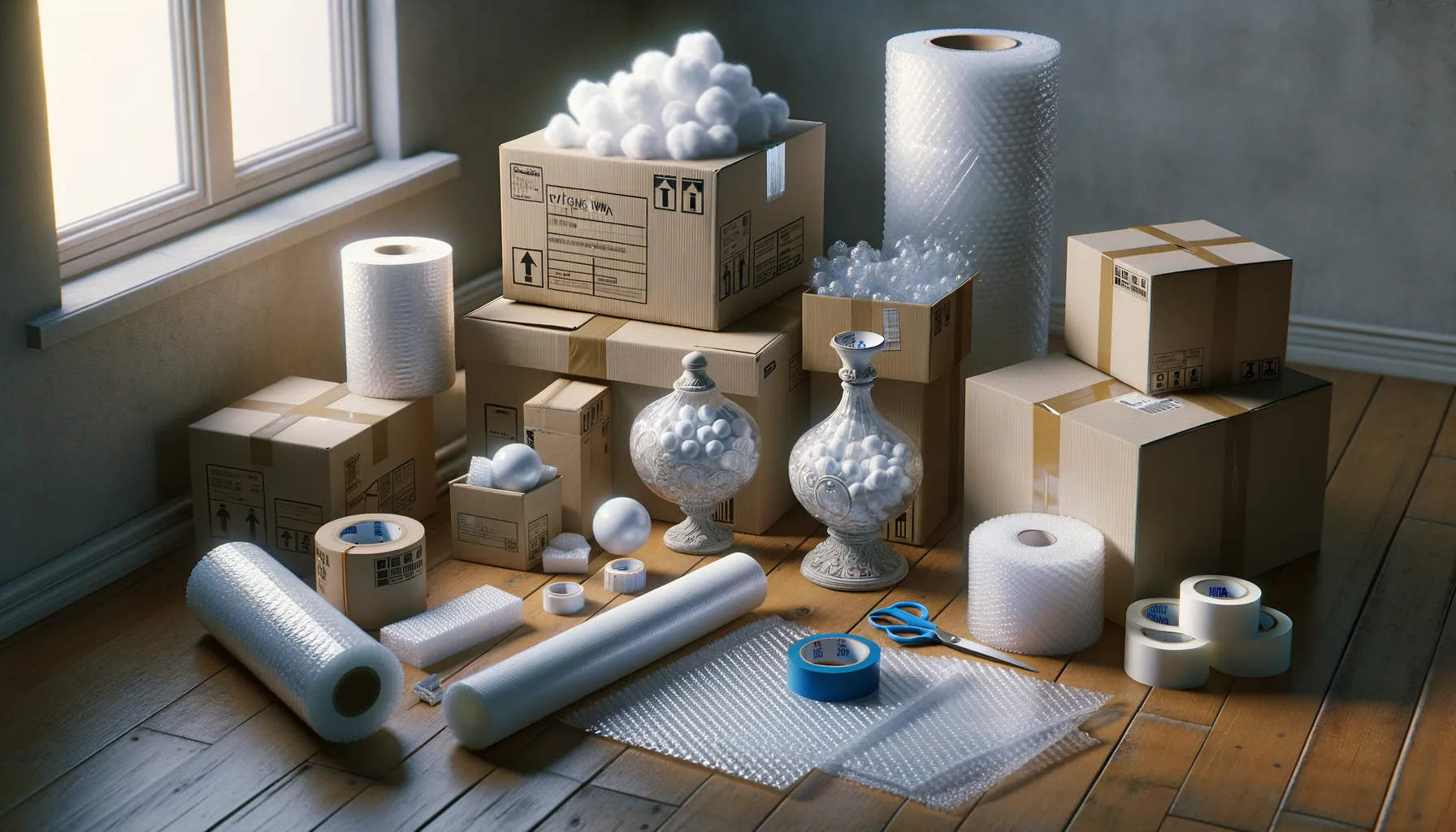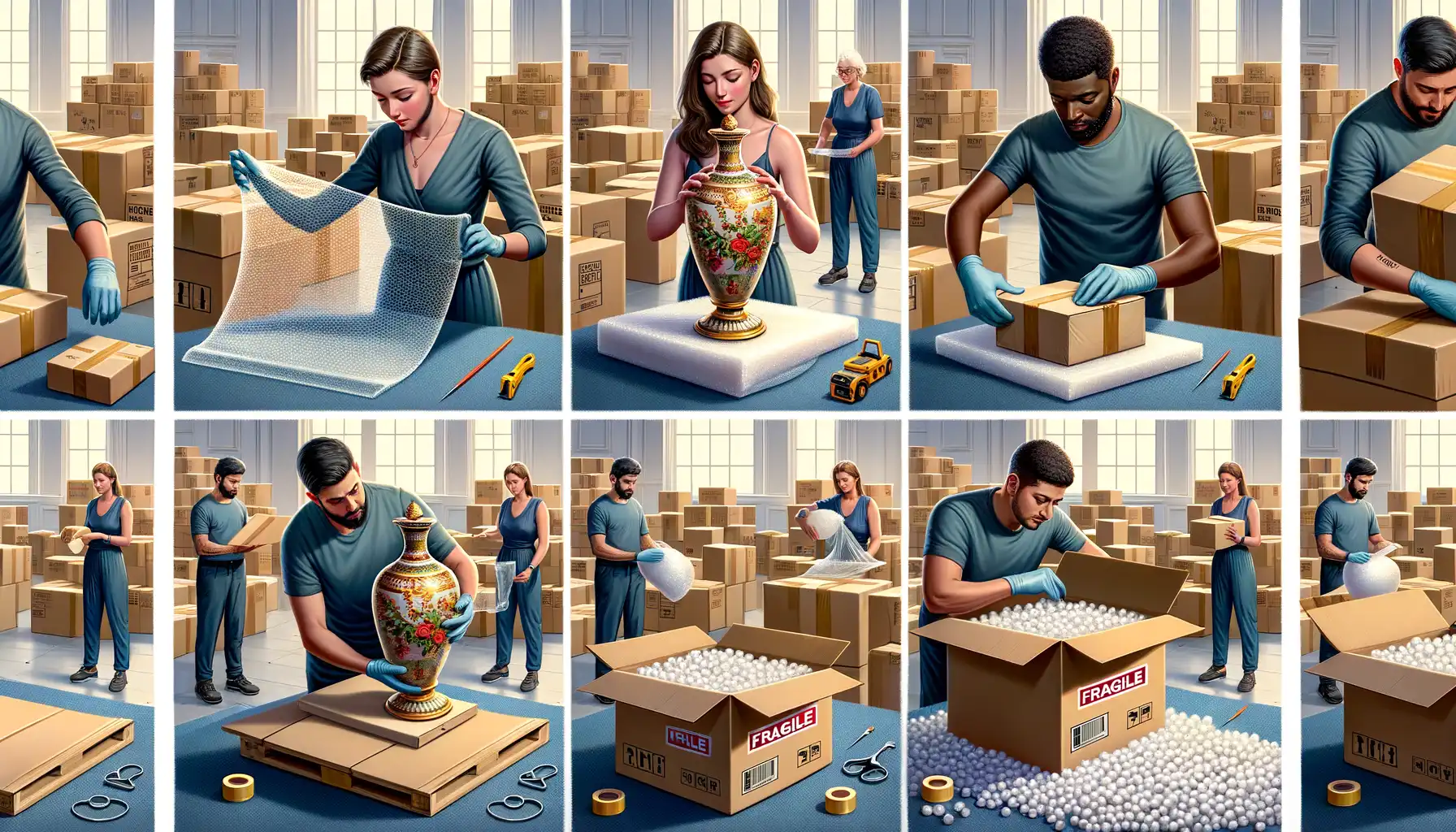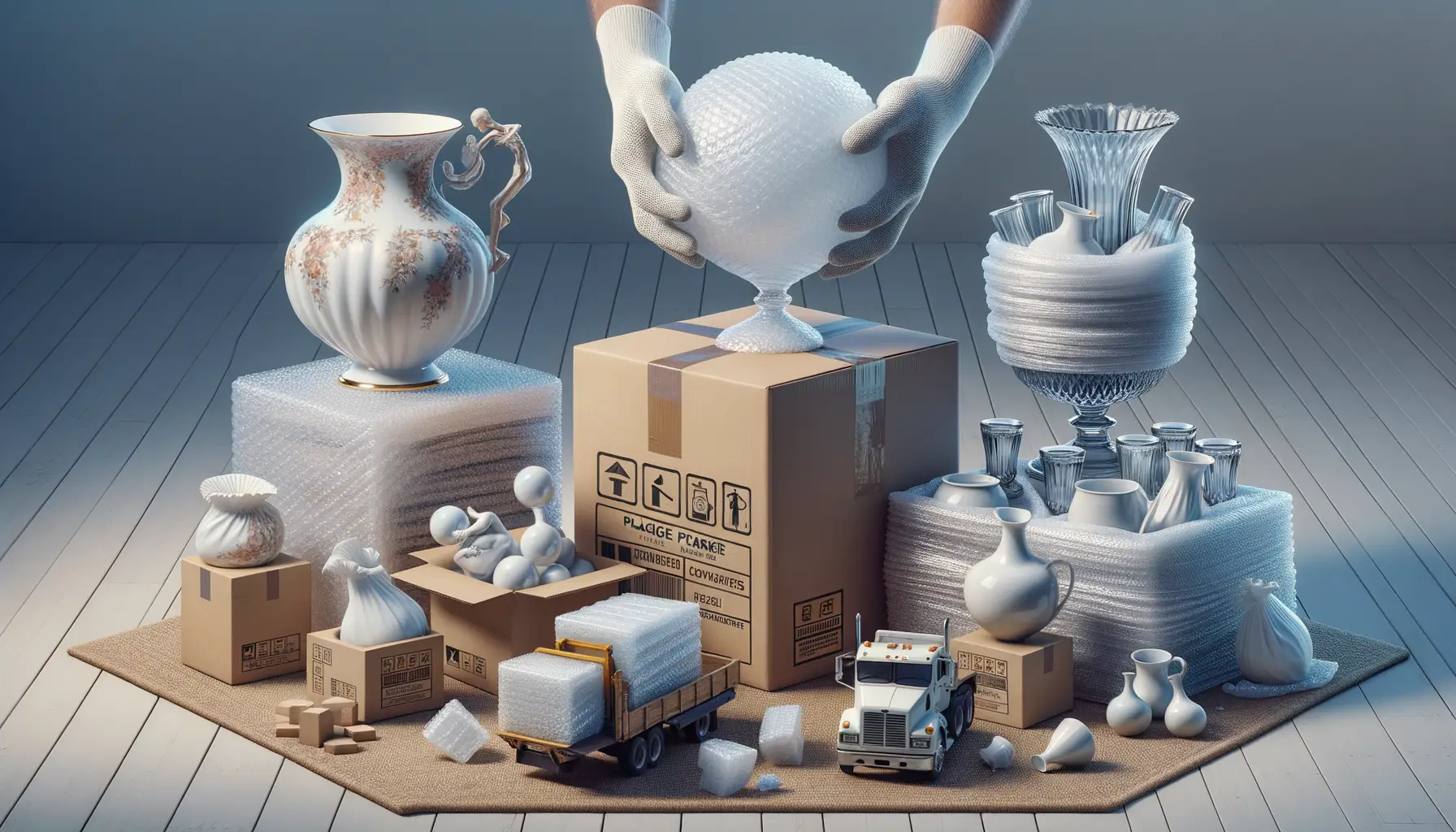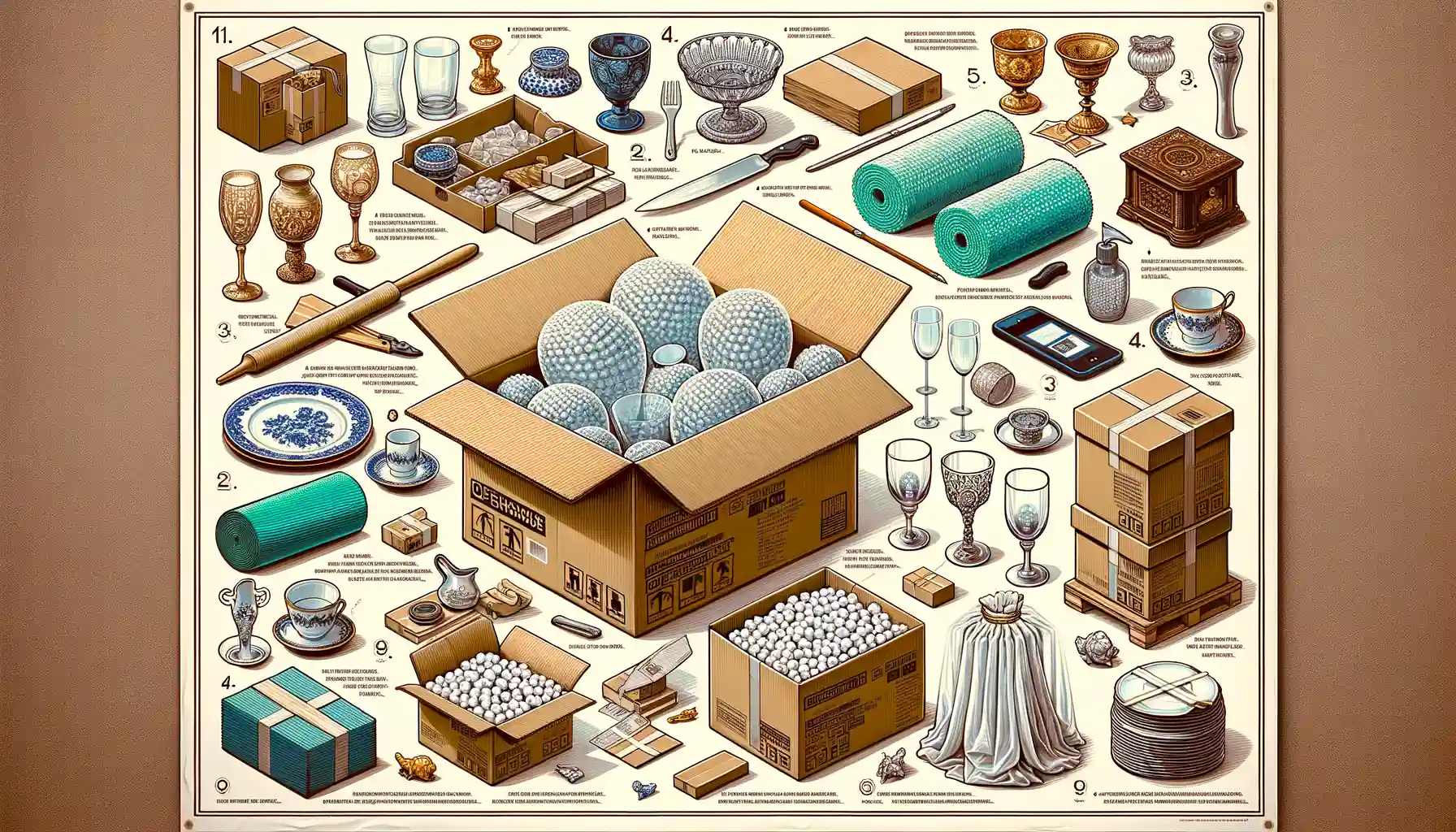Preparation Before Packing Fragile Items
Set the Stage for Success: Organize Before You Start
Packing fragile items isn’t just an activity—it’s a delicate dance, and every move matters. Before you even touch those glass vases or heirloom dishes, give yourself some breathing space. Clear a work area that’s clutter-free and calm. Picture a surgeon preparing for their most critical task; you, too, need to be in zen mode.
First, lay out any fragile items you’re packing so you can see exactly what you’re dealing with. There’s no shame in taking your time—it’s not a race, it’s craftsmanship! Once you’ve assessed the battlefield, mentally divide your items into categories like glassware, ceramics, or electronics. Trust me, grouping them now will save you boatloads of frustration later on.
Avoid Chaos: Clean and Inspect First
Before packing, give those fragile treasures a quick inspection and cleaning. Who wants to preserve dust for posterity? Plus, clean items are less likely to feel slippery in your hands. Check for cracks or weak spots—if something is already damaged, it needs *extra* love during packing.
Now, here’s a pro tip: make sure you’re not overlooking the smallest items. That tiny crystal figurine on the shelf? It deserves the same care as Grandma’s antique mirror!
Essential Packing Materials for Fragile Items

Why Choosing the Right Packing Materials Matters
Packing fragile items isn’t just about wrapping things up and hoping for the best—oh no, it’s about creating a cushioned sanctuary for your most delicate treasures! The wrong supplies could spell disaster, and no one wants to open a moving box to find shards of their favorite wine glasses or heirloom vase. To keep those heart-skipping moments at bay, here’s what you need:
- Bubble wrap: Your ultimate weapon against impacts! Wrap it snugly around anything prone to breakage—dishes, figurines, even picture frames.
- Sturdy boxes: Not all boxes are created equal. Go for heavy-duty ones that can handle a bit of weight without caving in.
- Packing paper: Ideal for filling empty spaces. It cradles your items gently while keeping them from knocking into each other during transit.
Small Details That Make a Big Difference
You’ll also want to grab some high-quality packing tape—because skimping on tape is like locking your car doors but leaving the windows down! Don’t forget labeling materials like markers or pre-printed stickers. Clearly labeling boxes as “Fragile” can be the lifesaver your moving crew didn’t know they needed.
And here’s a tip many overlook: invest in packing peanuts or foam padding for cushioning heavier items like lamps or kitchen appliances. These tiny bits of foam may not look like much, but they’re essentially guardians in disguise. Every layer of protection counts!
Step-by-Step Guide to Packing Fragile Items

Prepare Each Item Like It’s a VIP
Packing fragile items is an art, and every delicate piece deserves the royal treatment. Start by wrapping each item individually in layers of bubble wrap. Think of it as their protective armor! For oddly shaped or extra fragile pieces like porcelain figurines, add extra padding to corners or protruding parts.
Here’s a golden tip: use crumpled packing paper or soft cloths to fill empty spaces inside hollow objects—like mugs or vases—so they don’t implode under pressure.
Next, when placing wrapped items into a box, remember this rule of thumb: no social distancing here! Keep them close together but padded with cushion materials (like peanuts or towels). This prevents movement, which is the arch-nemesis of fragile goods.
- Line the box with a thick cushion base before you start stacking your items.
- Place the heaviest items on the bottom, layering lighter ones on top.
Don’t forget the finishing touch: shake the box gently. If you hear rattling, it’s not ready! Add more filler until silence confirms those treasures are snug and secure.
Mistakes to Avoid When Packing Fragile Items

Skipping the Cushioning: A Recipe for Disaster
Imagine your fragile items going on a roller coaster ride without a seatbelt. That’s exactly what happens when you don’t use enough cushioning. One thin layer of bubble wrap isn’t hero material—it won’t save your grandmother’s antique vase. Instead, embrace the art of layering. For example, wrap glassware individually, stuff hollow areas with paper, and then surround it all with packing peanuts or crumpled newspaper in the box. Each piece deserves its own fortress of protection. Skipping this step? That’s like sending soldiers into battle armed with feathers.
The Trap of Mixing Heavy and Fragile Items
It might seem efficient to throw everything into one box—big mistake. Heavy items sitting on your delicate champagne flutes is just gravity being cruel. The result? Broken dreams and shattered heirlooms. Instead, create separate zones in your packing process. Reserve boxes exclusively for fragile items, and always label them.
Other mistakes to dodge at all costs:
- Using cheap, flimsy tape that doesn’t secure your boxes.
- Packing items too loosely, letting them rattle around like dice in a cup.
- Forgetting to mark boxes as “FRAGILE”—how will movers know to handle them with care?
By avoiding these pitfalls, you’ll give your fragile items the royal treatment they deserve!
Tips for Transporting Fragile Items Safely

Think Like a Fragile Item: Protect Every Inch
When it comes to transporting your precious, delicate belongings, imagine yourself in their shoes—or rather, their bubble wrap. A bumpy road feels like a roller coaster for that heirloom vase or flat-screen TV. To keep them safe, cushion everything as though you’re preparing it for battle!
First, always load fragile items strategically. Place larger, sturdy objects as a base layer and nestle delicate ones snugly on top—never the other way around. Treat your car or moving truck like a game of Tetris: every piece should fit securely with no wiggle room.
Second, follow this golden rule: fragiles ride upfront. If possible, keep smaller, priceless items by your side rather than letting them rattle around in the trunk.
- Use blankets, towels, or pillows to fill gaps between boxes.
- Label fragile boxes BIG and BOLD so movers know to handle with care.
Don’t Underestimate The Power of Tape & Timing
Double-down on tape. Securing box edges ensures they won’t pop open mid-journey. And, let’s not forget timing—it matters! Avoid moving fragile items during bad weather or late at night when visibility is poor. Trust me, your grandmother’s china will thank you.
